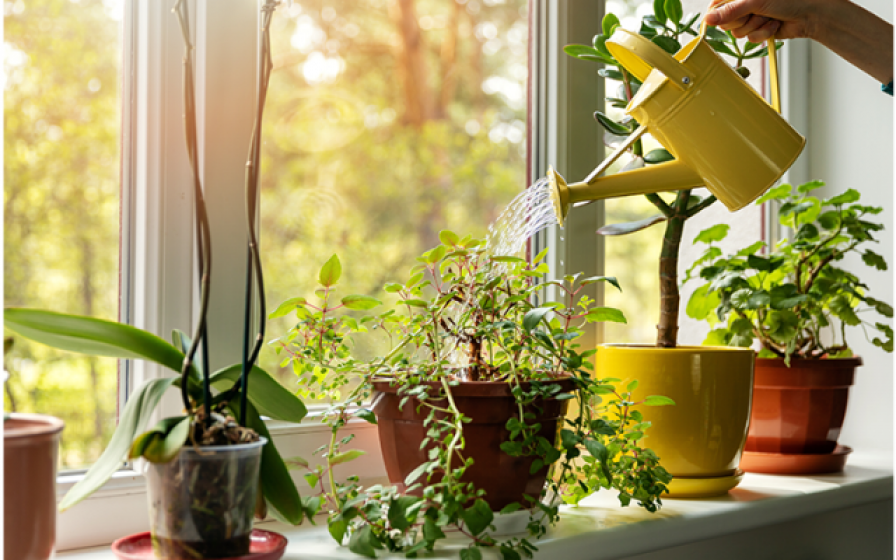Along with water, light is the most essential component of growing healthy plants. Some plants can survive with mediocre soil or without fertilizer, but no plant will live for long without light. And because lighting conditions in your home will have a direct effect on the growth and health of your houseplants, when selecting your indoor plants, it's important to consider where that plant will live before you bring it into your home. Too little or too much light can cause plants to look unhealthy, fail to grow and bloom, drop leaves or die altogether. Here are a few lighting tips to help you create a successful growing environment for your indoor plants:
KNOW HOW MUCH LIGHT IS RIGHT
All plants require different amounts of light. Some plants are adaptive and thrive in a myriad of light environments, while others are more temperamental and thrive best in high, direct light. Understanding which windows in your home will give your plant the best light is a key component of being successful.
East Facing Window (morning sun, gentle, direct sun) - East facing windows receive direct sun in the early morning when the rays are not as hot. Later in the day, the same windows will receive indirect light, avoiding scorching heat. Plants that need bright, indirect light do well in east-facing windows.
West Facing Window (afternoon sun, hot and bright) - Western windows will receive more indirect light in the early morning and early afternoon. The afternoon sun is intense and can increase the temperature near the window, so be careful with plants that could burn easily and move them a few feet away from the window.
North Facing Window (medium to low, indirect light) - North facing windows receive the least amount of light. These windows don’t receive any direct sunlight and work well for plants with low light requirements like ferns. In summer, light provided by a north-facing window is usually adequate for plants requiring bright, indirect light.
South Facing Window (full sun all day long) - South facing windows generally receive the most direct sunlight as long as the window is not shaded by a tree, canopy, or other structure. South facing windows typically provide the strongest and brightest light inside of your home. South facing windows provide a good spot for plants that require ‘direct’ sun indoors.
WAYS TO MAKE LIGHT LESS INTENSE
- Window Sheers - Window sheers are lightweight, sheer curtains that reduce the light intensity that comes through the window.
- Window Films - Window films block out varying levels of UV rays. Films are especially helpful in shielding sensitive plants from the harsh rays of the summer sun in south-facing windows.
- Placement - You may need to move your plants a few feet back from the window to avoid the direct rays of sunlight or closer to a window to provide more light.
TIP: We recommend rotating plants often, so all foliage receives enough sunlight.
Keep in mind that seasonal lighting changes will also change the amount of light coming in through your windows. You may need to change the location of your plants due to the season. In the summer, the sun’s rays are more intense and longer in duration. Consequently, light coming in through your windows will be brighter and more intense for a longer period of time. However, in winter, the days are shorter with fewer hours of daylight and less intense light.
SIGNS OF TOO MUCH LIGHT
Signs of too much light include brown edges or burned patches on leaves. Plant receiving too much light might also drop their leaves.
SIGNS OF INSUFFICIENT LIGHT
Symptoms of too little light include yellow discoloration, stunted leaf growth, elongated stems, plants that look as though they are reaching toward the light source (stretching), and/or a pale, dull green color. Plants getting too little light may also drop their leaves, so this can be a tricky symptom, since yellowing and leaf-dropping can also be caused by overwatering.
TIP: Low light conditions are a constant challenge when trying to select the best plant for your home or office. One way to determine lighting conditions in your indoor space is whether or not you can read a book comfortably without a light on in the location where you are going to place the plant. If you struggle to say yes, then be sure to select houseplants that will thrive in these low light conditions.
To learn more about houseplant care click here.
To learn more about the best indoor plants to enjoy during the winter click here.
